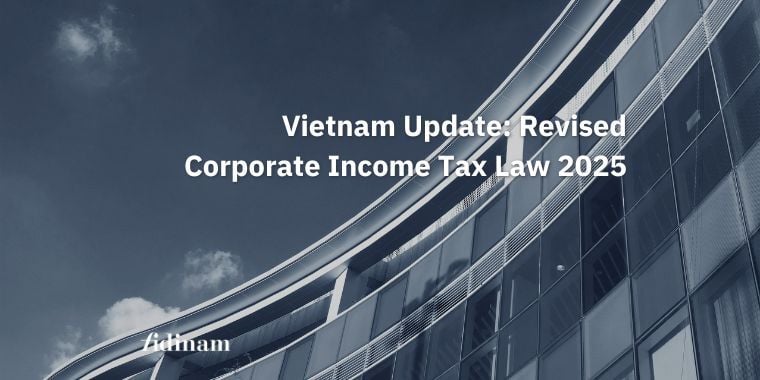
The National Assembly of Vietnam has officially passed the new Corporate Income Tax (CIT) Law, which is set to come into effect on October 1, 2025 and will be applicable to the 2025 tax period onwards.
Among the key amendments, the adjustments in tax rates to increase support for small and medium enterprises (SMEs) are particularly noteworthy, reflecting the government’s strong commitment to fostering the SME sector— the backbone of Vietnam’s economy.
According to Article 10 of the new CIT Law, the standard corporate income tax rate remains at 20%.
However, in addition to the preferential tax rates for the incentivizes companies previously regulated, two new lower tax rates have been introduced for SMEs, based on annual revenue:
The revenue used to determine eligibility is based on the previous fiscal year’s outcome. For newly established enterprises, the Government will issue separate guidelines to ensure proper implementation.
This new tax scheme is seen as a practical measure to help SMEs reduce financial burdens, reinvest in production, and scale up operations. Using revenue as the key criterion aligns well with business realities and simplifies compliance, while remaining consistent with the Law on Supporting Small and Medium Enterprises.
Crucially, to ensure transparency and prevent misuse of incentives, the 15% and 17% rates are not applicable to subsidiaries or companies with related-party relationships where the related entity fails to meet the eligibility criteria.
This provision is designed to ensure that benefits are directed solely to independent SMEs, rather than permitting large corporations to exploit the system for tax evasion.
Meanwhile, the CIT Law maintains higher tax rates for certain high-profit or resource-based sectors, including:
These provisions ensure fair revenue contributions from industries exploiting natural resources and reinforce sustainable development principles in fiscal policy.
With clearly defined tax brackets, transparent eligibility rules, and enforcement mechanisms, the new framework is expected to unlock greater growth potential for small and medium enterprises, contributing to a more resilient and inclusive national economy.
At Fidinam, we offer tailored tax advisory services to help businesses navigate the new CIT regime effectively. Contact us to learn how we can assist your company.
All content © . All Rights Reserved.